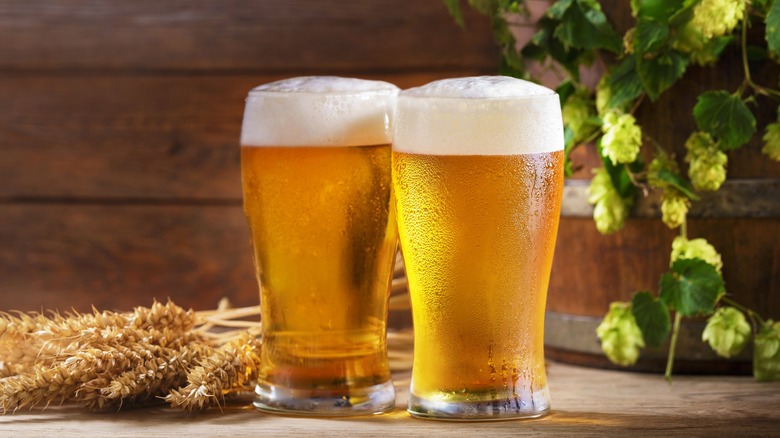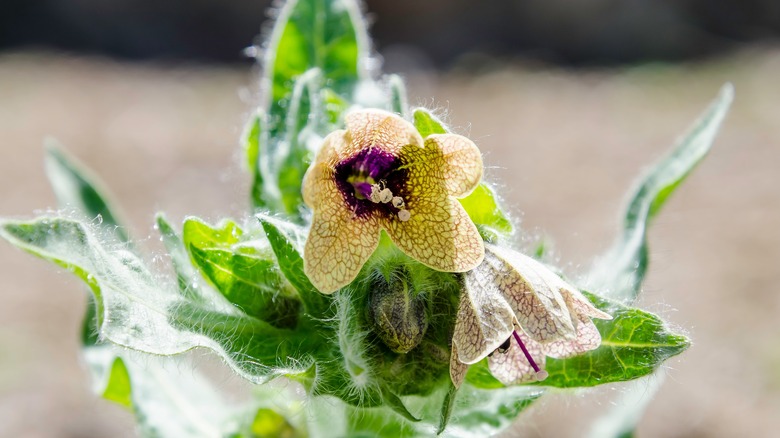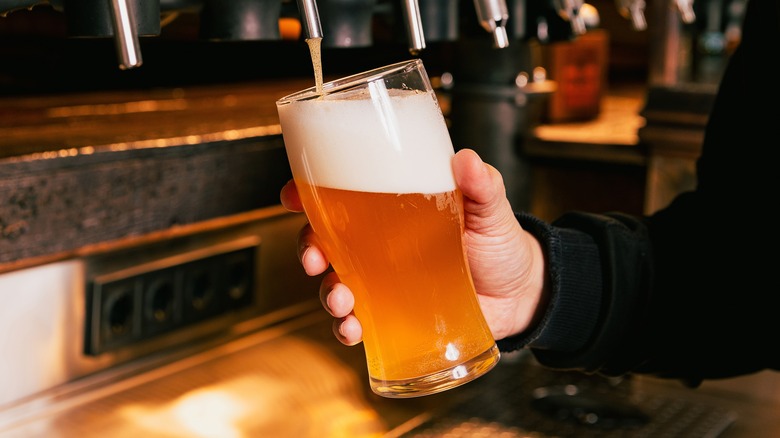The Beer That Once Terrorized Medieval Europe
We're lucky to live in an age when government regulations mean we don't have to worry (at least not continuously) that our food and drink are going to randomly contain poison. In 2023, the FDA issued guidelines for arsenic in apple juice, and that same year, the organization took significant steps to reduce lead exposure in baby food. But there was a point in time — for a long time — in which all sorts of things were added to foods and beverages that were far from ideal.
One of the best examples is black henbane, which occurred in beer during the Medieval Era in Europe. If black henbane sounds familiar to you, it's because it's a relatively common invasive weed also known as hogbane, stinking nightshade, fetid nightshade, and poison tobacco. As you might guess from all these less-than-pleasant names, black henbane is a member of the nightshade family and, in large enough quantities, extremely toxic. Despite this, prohibiting its use in alcoholic beverages was a long road, culminating in the toxic herb finally being given the boot only after centuries of work.
In smaller doses, black henbane has narcotic effects
You might be wondering why in the world brewers would frequently put a substance into their product that could kill their customers. The answer is that until you tip over into the "kill" zone with black henbane, it has very different effects. Smaller-than-lethal doses of black henbane cause hallucinations, increase intoxication and serve as an aphrodisiac. Under controlled circumstances, pharmaceutical companies still use it in small doses in applications such as sedatives, diuretics, and pain relievers.
It makes sense then that brewers in Germany would include it in their product. It was particularly associated with bock beers, which generally have higher alcohol content — higher alcohol means more inebriation, black henbane or not. Additionally, black henbane has the side effect of dry mouth, which means you immediately want to drink another beer. Much like how Coke used to contain cocaine (and Coca-Cola still has a legal cocaine factory in New Jersey), black henbane was used because it made people drinking feel good and allowed you to sell them more beer. That is, unless they were poisoned by it — and in many cases, people were.
Eventually, Germany banned black henbane in beer
Poisoning customers was particularly an issue since drinking beer was extremely common in the Middle Ages. In the Medieval Era, people often drank beer instead of water, as it was considered more nutritious. The idea they drank it because water was unsafe is a persistent myth, but it certainly was a source of calories and carbohydrates. That makes it a problem when a major source of nutrients repeatedly poisons people.
Nevertheless, eventually enough was enough. In 1516, Duke Wilhelm IV of Bavaria issued the Reinheitsgebot, or German Purity Laws, which limited the legal ingredients in beer to hops, malt, water, and barley (wheat was banned from brewing by the same decree, but that was so more bread could be produced). However, getting rid of it in other European nations took longer.
Today, you might see all sorts of ingredients in beer, from fruits to herbs to chocolate. What you won't see is black henbane — something for which Medieval Europeans would likely be grateful.


